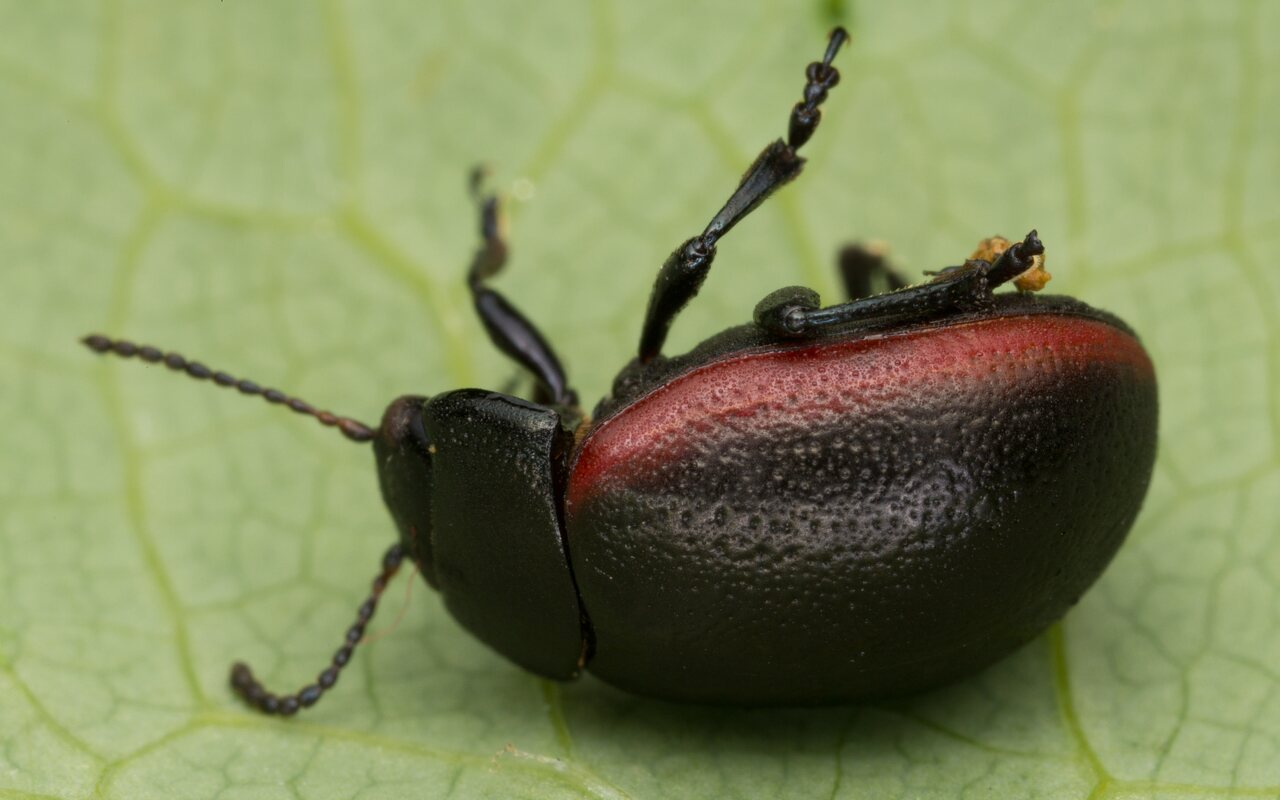
Chrysolina marginata · raudonkraštis puošnys
- Chrysomela marginata
- sauniokuoriainen
- raudonkraštis puošnys
- Gerand goudhaantje, Bruin duizendbladhaantje
- ryllikbladbille
- złotka obrzeżka
- större röllikebagge
Chrysolina marginata is a virtually Holarctic species constituting at least 16 subspecies and several named colour varieties; the subspecies are localized in Europe and Asia, and 7 of these are endemic to Morocco. The nominate subspecies is very widely distributed, it occurs throughout Europe, North Africa and the Middle East, and east through Siberia though apparently not reaching the Pacific Ocean; in the Nearctic it occurs across the northern United States, Canada and Alaska. It extends north to the arctic in Russia and occurs up to 2200m in the French Alps. Here the typical habitat is among short-grazed grass on sandy or open and well-drained soils on heaths and moorland, often near rivers, and with an abundance of the food plants, Achilea millefolium, or Yarrow and other Asteraceae including members of Artemesia, Chrysanthemum, Matricaria, Centaurea, Leucanthemum, Tripleurospermum. The adults occur year-round and are most common in the spring and autumn; they are nocturnal, along with the larvae, hiding by day among vegetation or in turf near the host. They overwinter under stones and debris or in turf and become active during April when they begin feeding upon fresh host foliage. Oviposition occurs in the spring; females attach eggs singly to the host foliage and the larvae emerge in May and June, these are fully grown by the end of June and through July when they will pupate in an underground cell below the host. New generation adults appear in late summer and most will overwinter although a few will mate and lay eggs in the autumn, these will produce larvae that will overwinter as first instars and become active and develop in the spring, producing adults in May and June. There is a single generation each year throughout the species range. Wing development varies but some specimens have been observed to fly.
A medium sized, 4.5-7.5mm. In the nominate subspecies the upper surface is dark metallic bronze but outside the U.K. this varies considerably e.g. the Siberian subspecies dierythra (Rottenberg, 1871) has wide pale yellow elytral margins that are visible from above, and ab. marginicollis Derenne, 1949 has the pronotal margins red. The dorsal colouration coupled with the pale elytral border and the form of the apical segment of the maxillary palps will identify this species. The appendages are black, with the basal segments of the antennae, or at least the ventral surface of segments 1 and 2, pale. Head finely punctured and with a variable Y-shaped impression on the vertex and frons. The apical segment of the maxillary palps is longer and broader than the penultimate segment, and broadly cylindrical. Pronotum finely but distinctly and deeply punctured, the side margins are weakly curved and the wide lateral margin is demarked by a row of strong punctures which become deeper and confluent at the base, the posterior margin is strongly sinuate. Scutellum impunctate and shiny. Elytra with granulate microsculpture which is much stronger in the female, each elytron with 9 rows of strong punctures although these can become random on the disc and below the scutellum; interstices finely punctured, the margin outside the ninth stria, including the epipleura, is red. The marginal red colouration is not visible from above. Legs black or nearly so, the tibiae are gradually widened towards the apex and lack teeth although there is a series of truncate bristles towards the apex which might be mistaken for teeth.
‥
0 comments
Add a comment
Comments